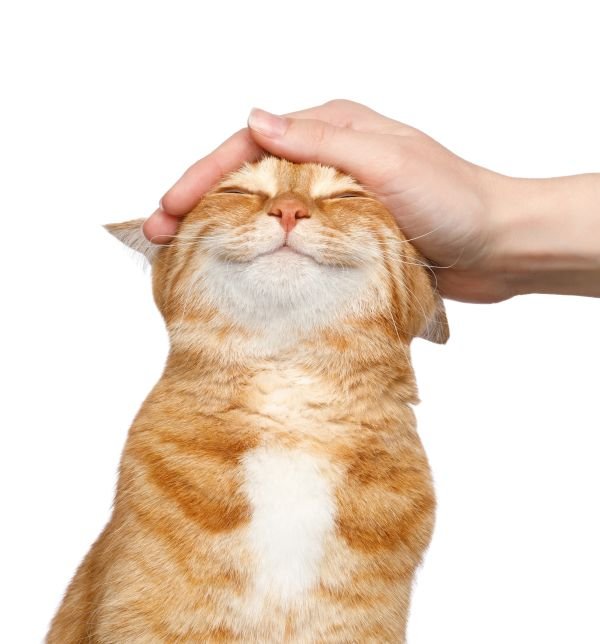
When it comes to choosing feline pets, the most obvious preference alway
s comes down to their physical appearance. As it happens, this aspect alone comprises a number of categories including namely: body type, color pattern, texture (coat or skin), and specific mutation features (e.g. folded ears).
Uniqueness is one of the strongest driving forces influencing the feline ownership industry.
According to the North American-based Cat Fancier’s Association (CFA), there are roughly 44 standard domestic cat breeds on earth. Despite the demand for more unique characteristics, the CFA holds a strong stance against adding more breeds to its existing registry.
For nearly 10,000 years, crossbreeding has shaped how domestic cats become creatures that they are today. Some of these genetic mixes occurred naturally (e.g. diaspora) while others are a product of human ingenuity (if not abomination).
The mixed cat breeds continue to fascinate a lot of people for which such standout novelty features become viral and/or overpriced.
Contents
Australian Mist
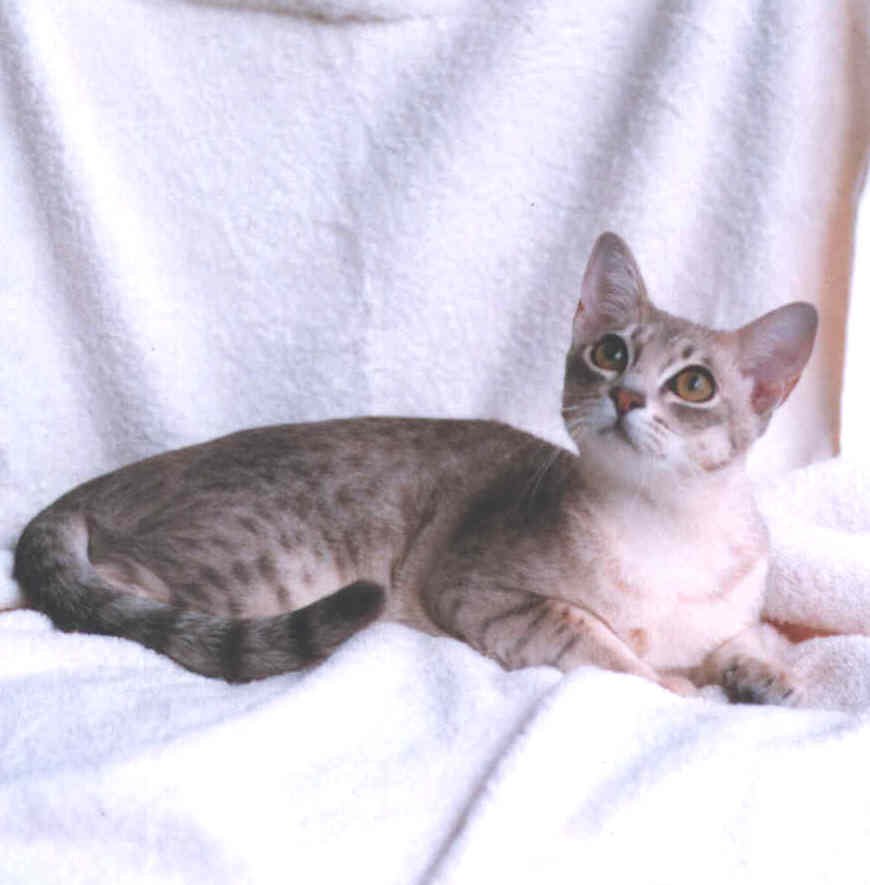
The Australian Mist is a crossbreed between the Abyssinian and the Burmese. This cat has a medium-sized body; ideally defined by a slender but robust structure.
It has a short fine glossy fur with a coat pattern that may either resemble a tabby or spotted feline. The Australian Mist has seven basic colors – with gold being the most popular in the spectrum.
In terms of behavior, the Australian Mist can be a perfect animal companion for laid back families. Its gentleness makes it a suitable playmate for small children and it is rarely hostile against its own kind.
Most importantly, Australian Mists are more inclined to be living indoors given their docile temperament.
The breed was first developed by a renowned breeder named Dr. Truda Straede in 1976. These cats were exclusively known as ‘Spotted Mist’ until 1998. From that time on, the ‘marbled’ coat pattern became an added variety in terms of general appearance.
- Average lifespan: 12 to 16 years
- Male weight: 8 to 15 lbs
- Female weight: 7 to 13 lbs
- Kitten price: $600 to $800
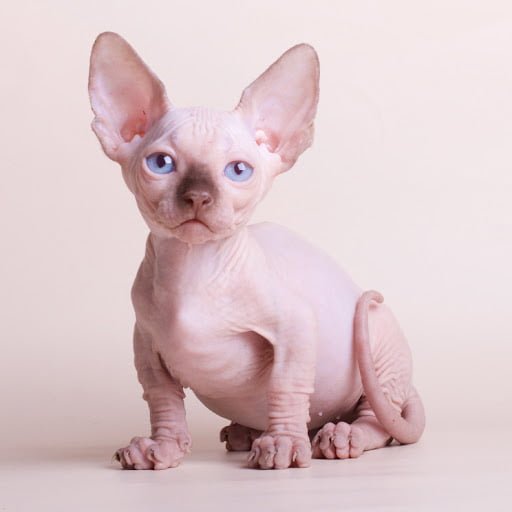
Bambino
Combining the hairless Sphynx and the diminutive Munchkin has produced one of the most physically unique feline breeds on earth – the Bambino. This cat is primarily known for being tiny, short-legged, and bald (though a small percentage of this breed also grows very short fur).
Other physical characteristics that stand out among Bambinos include the disproportionately large upright ears and the prominent ‘lion-like’ tail.
When it comes to social aptitude, this small feline breed shares a strong similarity with the Australian Mist – being amicable and child-friendly.
But if there is one behavioral characteristic that pet owners can truly appreciate, it is its ‘adaptability.’ Unlike most cats, the Bambino can remain well-behaved during overseas travels.
This cat was registered in The International Cat Association (TICA) in 2005 as an experimental breed. Due to its juvenile kitten-like appearance, this breed was given the namesake that means ‘baby’ in Italian.
- Average lifespan: 12 to 14 years
- Male weight: 5 to 9 lbs
- Female weight: 4 to 7 lbs
- Kitten price: $1,500 to $3,000
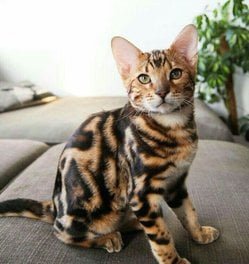
Cheetoh
Domestic feline pet that descended from a wild cat can lure exotic connoisseurs. Truly, the same kind of positive attention is given to this Bengal and Ocicat crossbreed.
This cat possesses a very athletic built – with its glossy short-haired coat painted in leopard-like spots (rosettes). It also has comparatively longer hind legs, large pointed ears, and an evenly triangular head.
Cheetohs tend to possess a free spirit that is paired by a very keen intelligence – traits that are prevalent among their Bengal parents.
In other words, they are not the ideal ‘lap cats’ for laid-back families. These cats show their affection by being playful and needy around their owners.
The first Cheetoh made a mark in the world during 2003; courtesy of an extensive breeding program by an academic group called the Wild Haven Exotics. Bengals have been a primary subject of various feline crossbreeding – with Cheetohs being a testament to that success.
- Average lifespan: 12 to 14 years
- Male weight: 10 to 15 lbs
- Female weight: 8 to 12 lbs
- Kitten price: $500 to $800
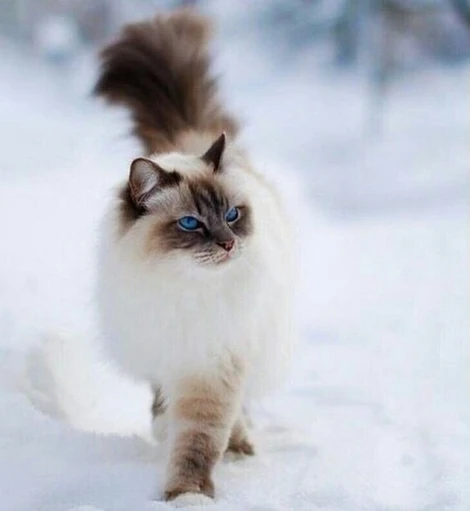
Himalayan
Combining the Persian and Siamese breeds has produced one of oddest mixed varieties. For one thing, the Himalayan has two types of faces.
The ‘doll-faced’ Himalayan is characterized by a finely contoured full-painted (black or gray) face – courtesy of its Siamese parents. The ‘ultra-type’ Himalayan inherited one of the two Persians with a flat face/nose (resembling a Pekingese dog).
Himalayans normally have round bodies, with the exception of few. However, all of them have long hairs that go with six types of ‘point coloration’.
Though generally sweet-tempered, Himalayans can be moody and they do not coexist very well with dogs and hyperactive kids. They’re also prone to polycystic kidney disease as they might have inherited this prevalent disease from Persian parents.
There is no exact historical date to determine the crossbreeding of Persian and Siamese cats. After all, it wasn’t difficult for two breeds to converge within such relatively adjacent geographic zones (the Middle East and Southeast Asia).
It wasn’t until a 1936 entry in the Journal of Heredity that the world has found a namesake to coin for these felines.
- Average lifespan: 9 to 15 years
- Male weight: 9 to 14 lbs
- Female weight: 7 to 11 lbs
- Kitten price: $600 to $1,000
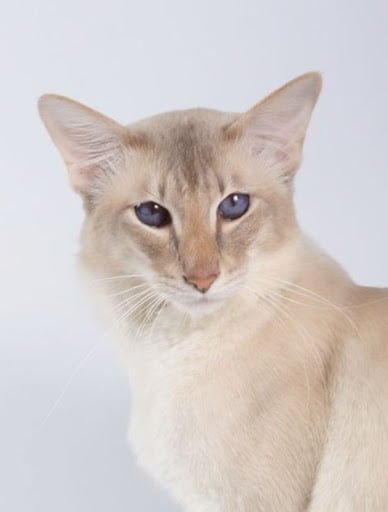
Javanese
Otherwise known as the Colorpoint Longhair, the Javanese is one of the many mixed breeds with more than two definite parentages. This cat is a crossbreed between Siamese, Balinese, and Colorpoint Shorthairs.
It exemplifies the quintessential Oriental features (slant-eyed, slender, and pointy-eared), covered in similar shaded patterns similarly worn by its Himalayan cousins.
The Javanese are adaptable, sociable, and relatively energetic. However, they tend to be very vocal up to a point where they are likely to cause disturbance to other people/households.
Without the constant attention of their owners, the Javanese is likely to suffer depression.
Although the Javanese has been identified as a feline breed in the 1950s, it took nearly 28 years for it to become officially recognized by the CFA. Nevertheless, how this feline breed ought to be classified remains to be a highly contested technicality even today.
- Average lifespan: 9 to 15 years
- Male weight: 7 to 10 lbs
- Female weight: 5 to 7 lbs
- Kitten price: $900 to $1,500
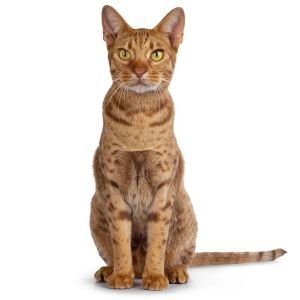
Ocicat
Despite having an uncanny resemblance to many shorthaired wild cats, the Ocicat’s DNA remains within the realm of tamed feline genes. This domestic cat is a crossbreed between an Abyssinian, an American Shorthair, and a Siamese.
Apart from its leopard-like spots, the Ocicat is renowned for its muscular physique and remarkable facial proportions (e.g. almond eyes and 45-degree ears).
Ocicats also tend to possess an outstanding psychological profile. They are very sociable and energetic – up to a point wherein observant people can aptly describe them as ‘a dog in a cat’s body’.
They are one of the few examples of feline creatures that are eager to please their owners, and even the rarer types that are predisposed to obedience training.
The earliest successful crossbreeding of the Ocicat is credited to a Michigan-based breeder named Virginia Daly in 1964. Back then, this variety only had Abyssinian and Siamese as direct ancestors.
The subsequent addition of the American Shorthair into its overall heritage has allowed the Ocicat to earn a respectable place in the CFA in 1987.
- Average lifespan: 12 to 14 years
- Male weight: 11 to 15 lbs
- Female weight: 7 to 12 lbs
- Kitten price: $700 to $1,000
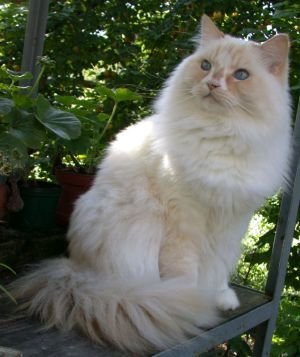
Ragamuffin
Another mixed breed that has descended from multiple traceable pedigrees is the Ragamuffin. This large long-haired cat has (at least) three notable parents: the Ragdoll, the Persian, and the Himalayan.
Just like the Maine Coon, these crossbreeds are notoriously massive – with shaggy fur to cover its heavily muscular body. They also sport nine varieties of solid- or murky-colored coat.
With Ragamuffin around, owners are expected to do vacuum cleaning at a more frequent rate.
However, it more than compensates the housekeeping inconvenience with its docile and relatively laid-back nature. In fact, the Ragamuffin is one of the quietest lap cats to have at home.
The origin of the Ragamuffin’s crossbreeding has always been tied up with the historical background concerning its Ragdoll predecessors. For one thing, the technical classification has been marred by decades of disagreement.
It took roughly 40 years or so for the CFA to officially classify the Ragamuffin exclusively in 2003.
- Average lifespan: 12 to 16 years
- Male weight: 12 to 20 lbs
- Female weight: 8 to 15 lbs
- Kitten price: $800 to $1,200
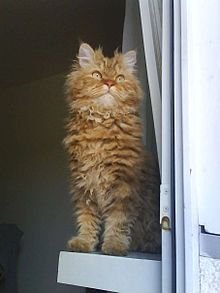
Selkirk Rex
Anyone seeing the Ragamuffin ought to be blown away with the Selkirk Rex for a few comparably similar reasons. This large long-haired feline breed has five notable parents: American Shorthair, Persian, Himalayan, Exotic Shorthair, and British Shorthair.
Unlike the Ragamuffin, the Selkirk Rex is covered in curly (wooly) and less-shedding fur – courtesy of the British Shorthair’s plush and glossy hide. This breed roughly has a non-patterned coat in six full or shaded colors.
The Selkirk Rex is a mild-mannered and gentle cat that suits the lifestyle of a more sedentary household. Unfortunately, it tends to be vocal when slightly provoked (e.g. negative stimuli).
As far as intelligence is concerned, feline experts categorize it as ‘average.’
In 1987, a feral cat in Montana gave birth to five kittens. Jeri Newman, a renowned breeder of Persian cats, was credited for noticing a more unique genetic attribute comparable to Devon and Cornish Rex cats.
Unlike the aforementioned varieties, the curls on the Selkirk Rex encompass its entire body.
- Average lifespan: 14 to 15 years
- Male weight: 11 to 16 lbs
- Female weight: 6 to 12 lbs
- Kitten price: $800 to $1,500

Singapura
Similar to the Australian Mist, the Singapura is a crossbreed between a Burmese and Abyssinian. It also has short hair; although its texture is smoother.
Its coat pattern is characterized by point coloration (shades of brown) instead of spots, rosettes or stripes. It is considered to be the smallest domestic cat – excluding the dwarf/teacup felines like the Munchkin or Bambino.
As far as its behavioral profile is concerned, this cat proved to be very energetic and smart. Beneath its gentle exterior is a set of robust muscles geared for climbing and exploration.
The Singapura likes to hoard the attention and fondness of its owners, though they are never vocal about the anything that usually sets cats off.
Originally in 1975, this breed was once believed to be a native of its namesake country (Singapore in Malay). It was later discovered in 1987 that the Singapura was a hybrid imported from the United States in 1974.
Despite the technical disputes, this cat has captured the hearts of locals that it became a mascot for tourism in 1991. It earned the Malay endearment kucinta (beloved cat).
- Average lifespan: 12 to 15 years
- Male weight: 6 to 8 lbs
- Female weight: 5 to 6 lbs
- Kitten price: $800 to $1,500
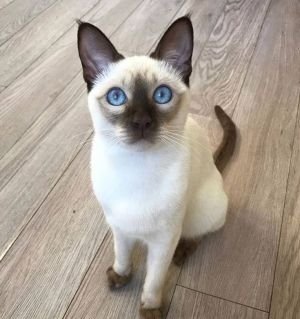
Tonkinese
The Tonkinese is byproduct of Siamese and Burmese parentage. Lean, medium-sized, and lightweight; it is all covered in plush silky coats.
Tokinese cats go in four different fur colors with three coat patterns: the point coloration (like the Siamese), the solid full color (like the Burmese), and the mink (a combination of the two). Curiously, a mink-colored Tonkinese usually has aquamarine eyes.
This breed is preferable for families who prefer smart and playful pets if they do not mind the frequent invasion of privacy. Aside from being an excellent cuddle buddy for kids and seniors, they also coexist well with indoor dogs.
Unfortunately, the Tonkinese is prone to gingivitis (wh
ich requires consistent oral grooming) and it tends to be very noisy at night.
Similar to the Javanese, these cats are believed to be a product of natural interbreeding. They have become historically visible in the 19th Century, but their popularity as an exotic creature in the Western world was noted during the 1930s.
It turned out that Wong Mau, the earliest identified Burmese cat in the United States, is actually a Tonkinese.
- Average lifespan: 14 to 16 years
- Male weight: 8 to 12 lbs
- Female weight: 6 to 8 lbs
- Kitten price: $600 to $1,000
